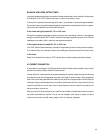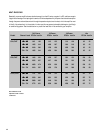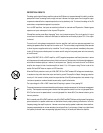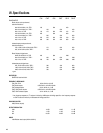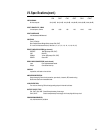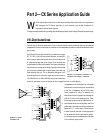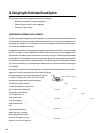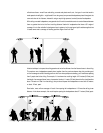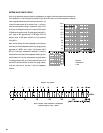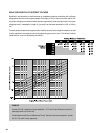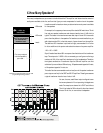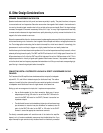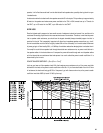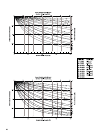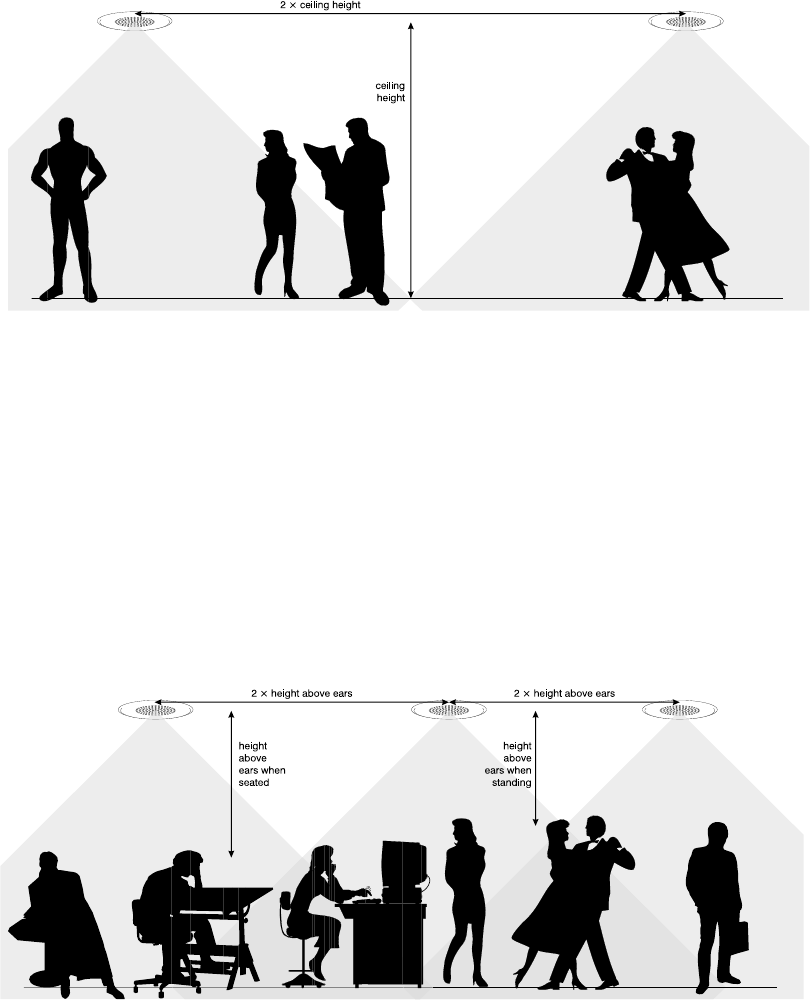
21
reflective surfaces—wood floors and ceiling, concrete and plaster walls, etc., the type of room that tends to
make speech unintelligible—might benefit from using many low-powered loudspeakers placed throughout the
room and close to the listeners, instead of using a couple high-powered, centrally-located loudspeakers.
With ceiling-mounted loudspeakers, one general rule of thumb is to make the center-to-center distance between
them no greater than twice the floor-to-ceiling distance. Used with loudspeakers that have a 90° angle of
coverage, this is often suitable for background music systems, but for paging and public address applications
it leaves some erratic coverage at listening positions higher than floor level.
A better technique is to space the ceiling speakers at twice the distance from the listeners’ ears to the ceiling.
This requires more loudspeakers spaced closer together than the previous scheme does, but provides good,
uniform coverage at realistic listening positions. In a room where people are standing, you’ll need closer spacing
than if people tend to be sitting. For example, if a lunchroom has a ceiling height of 2.9 meters (9.5 feet), and
the height of an average listener’s ear, when seated, is about 1.1 meter (3.5 feet) above the floor (and therefore
about 1.8 meter or 6 feet from the ceiling), then you should space the loudspeakers no more than 3.6 meters,
or about 12 feet, apart.
Even better, more uniform coverage will result from spacing the loudspeakers at 1.5 times the ceiling-to-ear
distance. In the above example, this would require spacing the loudspeakers about 2.7 meters (9 feet) apart.



